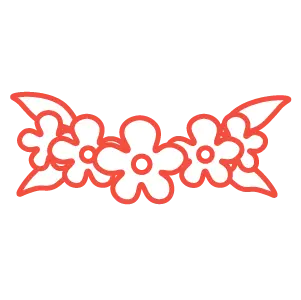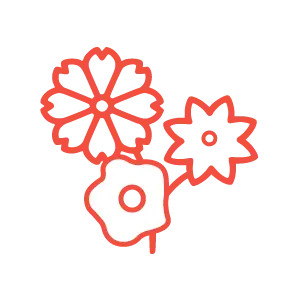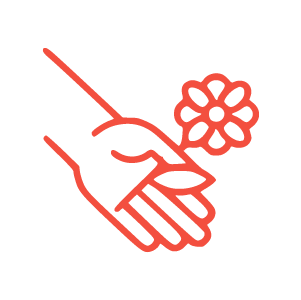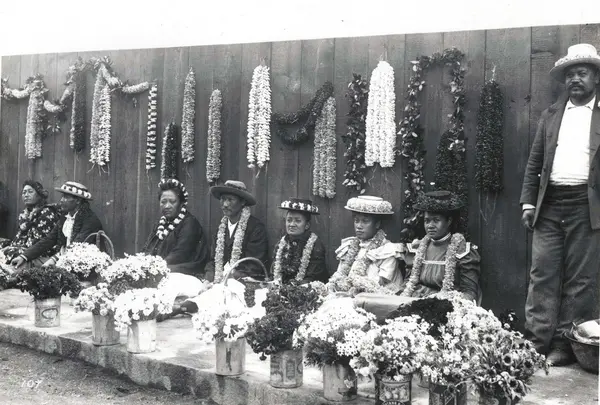
All About Leis
Lei is a symbol of Hawai'i and a gift unique from any other. We here at Cindy's Lei Shoppe are committed to sharing with you its tradition.
History
Throughout all the islands in the South Pacific, Polynesians honored their gods by twining foliage into wreaths, along with adorning themselves with strings of flowers and vines. Before Western contact, Hawaiians used indigenous materials or plants introduced from other parts of Polynesia. The most commonly used plants and flowers were Hala, Lehua, `Ilima, Ti and Maile.
After long ocean voyages ceased and Hawaiians entered a period of cultural isolation (1300s-1778), they developed a richer variety of lei than anywhere else in Polynesia. In a lifestyle that fused ritual and nature with every aspect of daily life, lei was a ubiquitous ornament worn during various work activities, along with celebrations or rites by ali`i (chiefs) as well as maka`ainana (commoners). (Hawaii History Source)
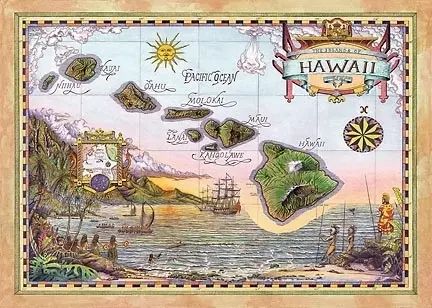
The state of Hawai'i in 1988 adopted the Pua Aloalo or Ma`o Hau Hele (Hibiscus blackenridge) as the official 50th State floral emblem. The state of Hawai‘i consists of eight major islands and each island adopted a local flower as its emblem flower and color. (Net State Source)
Hawai‘i | Lehua Ohia (MetrosiderosmacropusM.collina) also known as Pua Lehua | Red |
O‘ahu | 'Illima (SidaFallax) also known as the Pua`Ilima from the native dodder shrub | Golden Yellow |
Kaua‘i | Mokihana (Paleaanisata) | Purple |
Maui | Lokelani (Rosa damascene) also known as damask rose | Pink |
Moloka‘i | White Kukui Blossom (Aleuritesmoluccana) Also known as Pua Kukui from the candle nut tree | Green |
Lana‘i | Kaunaoa (Cuscutasandwhichiana) from the native dodder | Orange |
Ni‘ihau | Pupu Shell (Laiki and Kahelelani) also known as the Momi | White |
Kaho’olawe | Hinahina (Heliotropiumanomalumvar. argenteum) also known as Pele's Hair | Gray |
Old Hawai‘i
During the late 1800s when steamships brought visitors to the islands, the visitors were given a beautiful fragrant lei as a way to greet them and welcome them to the island. People began to create legends about the lei. Some say the lei was "good luck". The most popular legend was when you set sail to go home, if you tossed your lei overboard and it floated toward the beach, you would someday return to the island. It is said that when a steamship left the island, hundreds of leis were seen floating on the surface of the ocean.
Ships brought many visitors to Hawai‘i by boat before the era of flight. These ships were filled with adventurers seeking to explore these exotic tropical islands. Upon landing they were greeted by sounds of ukulele strums as well as hula dancers adorned with ti leaves and bearing lei.
May Day
Since May 1, 1928 Hawaii has celebrated every May 1st as it’s official "Lei Day.” "May Day is Lei Day" is a merry expression local islanders use to celebrate the holiday. Lei is celebrated passionately on May Day with hula, parades and music. On May Day, most parents request to take a day off of work so they can watch their children participate in May Day festivities and programs at school. Everyone in Hawaii is encouraged to wear a lei on May Day.
What occasion is appropriate to give a lei?
In Hawaii, a lei is given for every occasion! Birthdays, anniversaries, retirements, graduations, engagements, weddings, award ceremonies, blessings or just 'cause! It is common for graduates to have so many leis around their neck that they can no longer see! Quite simply there does not need to be an occasion to wear a lei - we have many customers stop by to purchase a lei for no reason at all, except to extend their thoughtfulness or to show they care for a special person in their lives.
Etiquette
The history of the Hawaiian lei tells us that originally leis were presented to another person by bowing and slightly raising the lei above your heart to offer the lei to be taken by the other person. It was considered very bad manners to raise your hands or arms above another person’s head, so it was never put around the neck. During World War II and the American soldiers arrival on Oahu, the custom changed and lei were placed around the neck and the recipient was given a kiss on the cheek to show affection and welcome. Today it is proper etiquette to give a lei or bestow one onto another person. It is considered taboo to gift a lei to yourself.
How to wear a lei
The proper way to wear a lei is gently draped over the shoulders, hanging down both in front and in back. If there is a bow/ribbon on the lei, it should be placed on the shoulder.
Pregnancy: It is considered taboo to give a closed (tied) leis to a pregnant (hapai) woman. It is considered in Hawaii impolite because many feel that a closed lei around the neck is bad luck for the mother and unborn child. Haku (flower crown / headband lei) and open-ended leis are acceptable to give to a pregnant woman.
Accepting a Lei
Always graciously accept a lei with aloha, reciprocate with a smile, a kiss on the cheek, or a warm embrace. If you are allergic or sensitive to flowers, then discreetly and apologetically slip off the lei. It is considered rude to remove a lei from your neck in the presence of the person who gave it to you, so if you must, be discreet. It is acceptable and considered a kind gesture to offer the lei to your spouse if you are unable to wear it. However, for those with allergies we do offer non-fragrant lei selections in-store.
Lei making is an art. It takes a delicate hand and lots of love. Expert artistry involves a seasoned eye for tension, color, neatness, and overall workmanship. We have leis that take up to several hours to create from harvesting the flowers, sewing/braiding and eventually to completed floral creation.
Keeping Leis Fresh
Cindy's Lei Shoppe is committed to providing our customers with the best floral products. We use the freshest flowers possible to create your leis and we hand select blooms to provide the look similar to those portrayed on our website. Lei orders are prepared fresh on the day of ship to ensure the longest longevity during transit. However as with all floral material, we are at the mercy of Mother Nature and our aina. There will be on occasion that we may experience hardship with the harvest or production of the blooms. Should that occur we reserve the right to substitute flowers without sacrificing the look and value of your unique floral art.
Returning to Nature
The history of the Hawaiian lei tells us that there is also a tradition with disposing of a lei. It should never be tossed in the trash. Leis should also not be thrown into the ocean or earth as they were in the past. We encourage everyone to protect our oceans and aina by removing the flowers from the string and then disposing of the each part accordingly. All lei are filled with love and aloha from each designer and we recommend that each lei should be returned where the flowers were gathered or returned to the earth by: 1) hanging it on a tree branch, 2) removing the string and scattering the flowers, 3) burying it or 4) burning it.
Fragrant Hawaiian flowers are tuberose, pikake, ginger, and plumeria. Orchid leis are the hardiest, varying in sizes and colors.

